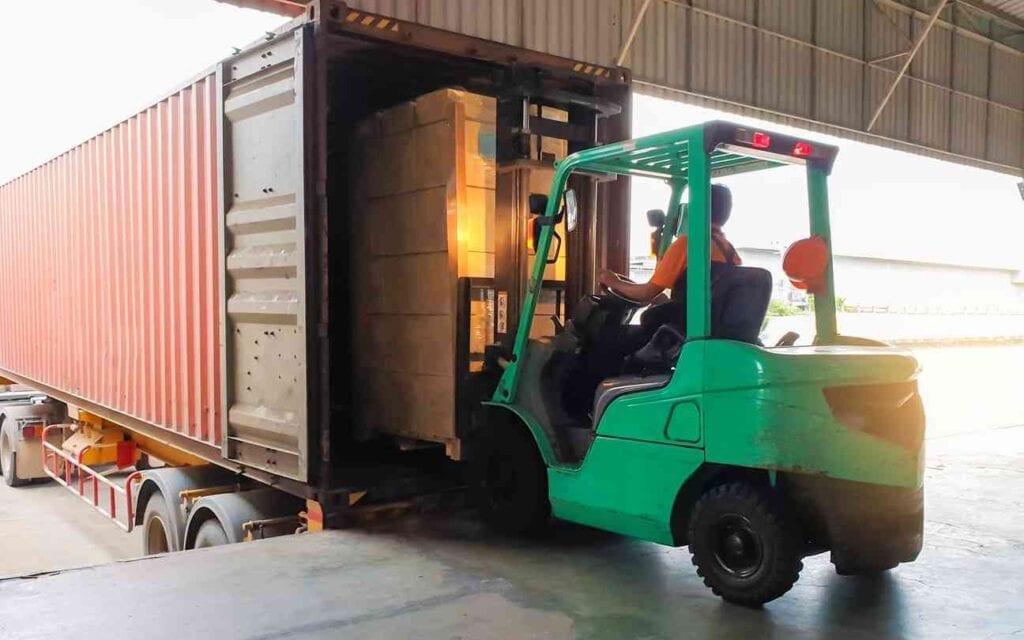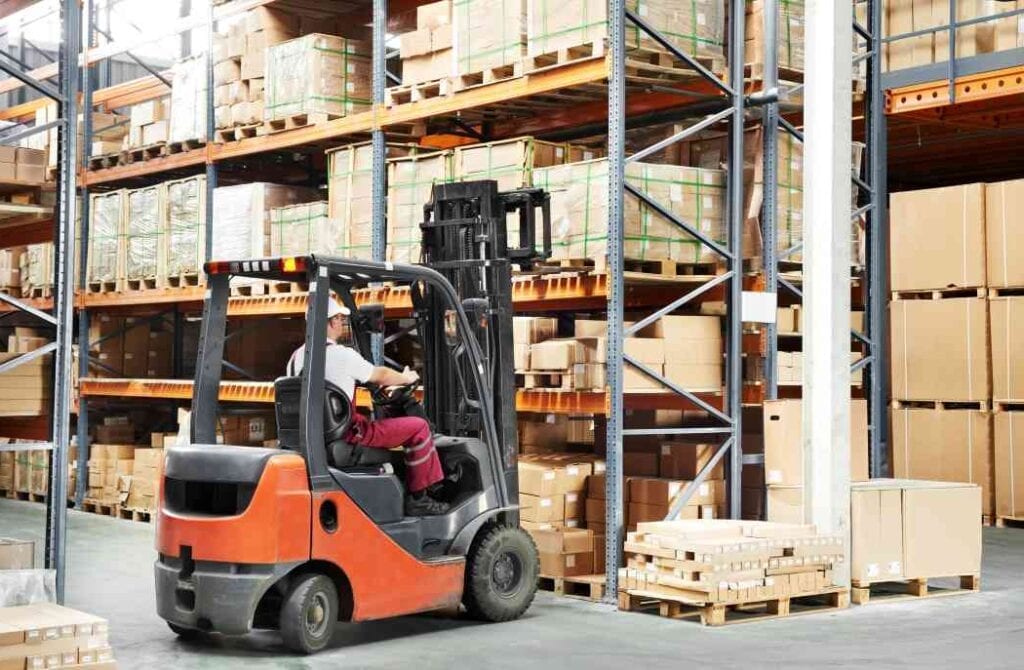Looking to buy a new forklift? One of the first things you need to know is how much a forklift weighs. This information comes in handy when you are looking to have your new forklift shipped to you. It’s also important to know the weight of your new forklift to make sure it will be supported by the structures it rides on. While your warehouse floor is likely safe, if you will use your forklift to load or offload trailers, then you need to make sure their floors can support the weight of your forklift.
Did you know that the average forklift weighs roughly the same as a female African elephant? That’s some serious weight. With an average weight of 9,000 lbs, the average forklift weighs close to 3x more than most cars. Forklifts are also back heavy to counterbalance the weight they carry on their forks.
Here’s how you can determine the weight of your forklift.
The first place to look for the weight of your forklift is on the manufacturer plate label. This will be the plate that describes the particulars of your forklift including its lift and load bearing capacity, and its service weight. These are two different figures, describing two different weights.
The service weight describes the total stand alone weight of your forklift. This includes all of its attachments and parts such as its battery or fuel system. The lift capacity and load bearing capacity of your forklift describe the maximum weight it can safely carry.
This information should be openly displayed on the manufacturer plate. If you can’t find the manufacturer plate, or if you don’t have access to it, you can search for your forklift model online. Most forklift manufacturers have their model information available on their website.

The first place to look for the weight of your forklift is on the manufacturer plate label. This will be the plate that describes the particulars of your forklift including its lift and load bearing capacity, and its service weight. These are two different figures, describing two different weights.
The service weight describes the total stand alone weight of your forklift. This includes all of its attachments and parts such as its battery or fuel system. The lift capacity and load bearing capacity of your forklift describe the maximum weight it can safely carry.
This information should be openly displayed on the manufacturer plate. If you can’t find the manufacturer plate, or if you don’t have access to it, you can search for your forklift model online. Most forklift manufacturers have their model information available on their website.
Need a quick estimate of the general weight of your forklift but can’t find the official information from the manufacturer? Try this simple equation.
Determine your forklift’s lift capacity, and multiply it by 1.5. Then, multiply it by 2. The general weight of your forklift will fall between 1.5x and 2x its lift capacity.
Here’s how that equation looks in action.
If the lift capacity of your forklift is 3,000 lbs, multiplying that number by 1.5 would yield 4,500. Multiplying the lift capacity of 3,000 lbs by 2, would yield 6,000. The weight of your forklift is between 4,500 and 6,000 lbs.
Forklifts need to be heavy so they can counterbalance the weight of the loads they are lifting and carrying. If a forklift is lighter than the load on its fork, then tipping can occur. This is also why forklifts are back heavy, as the weight they are carrying is on the front end.
Here are the weights of some of the most common and popular forklift models.
Hyster H50FT – 8,924 pounds
Toyota 8FGCU25 – 8,000 pounds
CAT C5000 – 8,110 pounds
Yale GLC050 – 9,016 pounds
The answer to this question depends on your operations. Most warehouse operations include loading and unloading delivery trucks. These delivery trucks utilize different trailers. Some trailers are able to hold a weight of up to 67,000 lbs, that includes all products, pallets, as well as the loading and unloading tools and their operators. Heavier forklifts are suitable for loading high load bearing capacity trailers.
The vast majority of trailers cannot hold this much weight. Small trailers such as box trucks can only hold between 7,000 and 16,000 pounds. Filling them to their full capacity leaves little to no room for the weight of your forklift. This is where a lighter forklift will come in handy.
Beyond loading and unloading trailers, you will also want to consider the wear and tear on your warehouse floor. While it will likely support a heavier forklift, supporting 9,000 or more pounds can grind down your warehouse floor, creating cracks and divots. Wear and tear on your warehouse floor can present safety hazards and may require a new floor replacement.
Replacing and repairing your warehouse floor is costly. It’s best to factor in the load bearing capacity of all surfaces that your forklift will ride on, and only buy a forklift that you know your surfaces can withstand with as little damage as possible.
Do you need some help determining the right forklift for your operations? Our knowledgeable heavy equipment experts are ready to answer any of your questions regarding forklift models, manufacturers, and lifting and service capacities. Contact us today and let us know how we can best assist you in your forklift purchasing journey.

The Used Forklift Network simplifies the buying process to get our customers the best equipment at the lowest price possible.
Links
Locations
Brands

We match you with forklift dealers near you based on what you are looking for.
Contact details
Opening hours
Address
Follow us